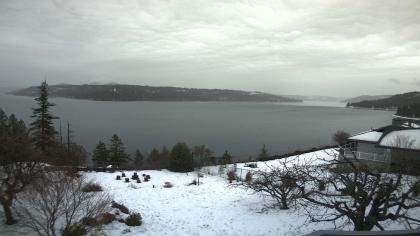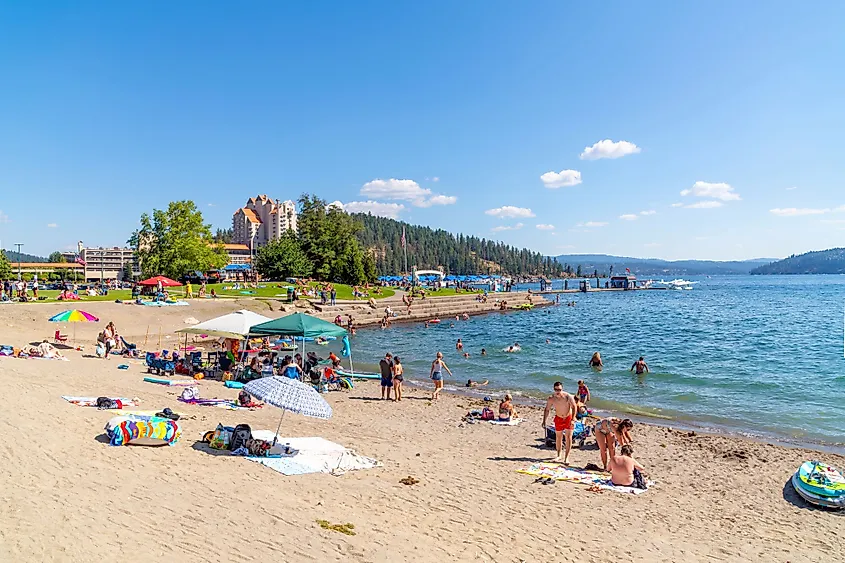
Guardians of the Lake: The Coeur d’Alene Tribe’s Enduring Story of Resilience and Reclamation
Nestled amidst the emerald forests and shimmering waters of northern Idaho, the Coeur d’Alene Reservation is more than just a geographic locale; it is the vibrant heart of the Schitsu’umsh people, a testament to enduring resilience, cultural preservation, and a profound connection to the land and water that has sustained them for millennia. While the name "Coeur d’Alene" often conjures images of a picturesque resort town, the reservation, distinct from the city, tells a deeper, more complex story of a sovereign nation reclaiming its narrative, its economy, and its destiny against a backdrop of historical adversity.
The journey of the Schitsu’umsh, meaning "The Discovered People" or "Those Who Are Found Here," is one etched in the landscape itself. Their ancestral lands, encompassing vast territories of what is now Idaho, Washington, and Montana, were a bountiful mosaic of lakes, rivers, and mountains. They were master fishermen, skilled hunters, and meticulous gatherers, their lives intricately woven with the natural cycles of the seasons. It was their shrewd trading practices and sharp intellect that earned them the moniker "Coeur d’Alene" – French for "Heart of an Awl" – from early French fur traders, a tribute to their keen business acumen.
The arrival of European explorers and settlers in the 19th century irrevocably altered the Schitsu’umsh world. Jesuit missionaries, most notably Father Pierre-Jean De Smet, established a presence in the 1840s, introducing new spiritual beliefs and agricultural practices. The historic Cataldo Mission, built by the Tribe under Jesuit guidance, stands today as Idaho’s oldest surviving building, a poignant symbol of this complex cultural exchange. However, the mission’s influence also paved the way for further encroachment.
The Treaty of Hellgate in 1855, intended to secure tribal lands, ultimately led to significant cessions, reducing the vast ancestral domain to a fraction of its original size. Subsequent federal policies, particularly the Dawes Allotment Act of 1887, proved even more devastating. This act forcibly divided communal tribal lands into individual parcels, with "surplus" lands then sold to non-Native settlers. This catastrophic policy resulted in the loss of over two-thirds of the Coeur d’Alene Reservation’s land base, fragmenting tribal territories and severely undermining their traditional way of life. For a people whose identity was inextricably linked to their collective stewardship of the land, this was a profound wound, leading to generations of poverty and cultural erosion.
"The allotment era was a deliberate attempt to dismantle our nation," explains a tribal elder, her voice resonating with the weight of history. "They wanted to turn us into individual farmers, to break our communal spirit. But the spirit of the Schitsu’umsh is like the roots of the ponderosa pine – deep, resilient, and connected even beneath the surface."

Despite these systemic pressures, the Coeur d’Alene Tribe never surrendered its identity. The late 20th century marked a pivotal shift, as the Tribe embarked on a path of aggressive self-determination. A cornerstone of this economic and social revitalization has been the Coeur d’Alene Casino Resort Hotel, which opened its doors in 1993. More than just a gaming establishment, the casino is the primary economic engine for the reservation, generating revenue that funds a wide array of essential tribal services.
"The casino, for all its modern trappings, is a tool for self-determination," states a tribal council member. "It allows us to provide for our people – healthcare, education, elder care, housing, infrastructure – things the federal government promised but often failed to deliver. It’s about taking control of our own destiny."
The impact of the casino’s success is visible across the reservation. State-of-the-art tribal clinics offer comprehensive healthcare, while robust educational programs, including scholarships and a tribal school, nurture the next generation. Elders, revered in Schitsu’umsh culture, receive dedicated support and care. The casino also provides hundreds of jobs, making it one of the largest employers in the region, benefitting both tribal members and the surrounding communities.
Beyond gaming, the Tribe has diversified its economic portfolio, engaging in sustainable forestry, agriculture, and other enterprises that align with their land ethic. These ventures not only create jobs but also reinforce the Tribe’s commitment to responsible resource management.
Crucially, this economic resurgence has fueled a powerful cultural renaissance. Language immersion programs are meticulously designed to revitalize the endangered Coeur d’Alene Salish language, ensuring its survival for future generations. Traditional arts, ceremonies, and storytelling are actively practiced and celebrated, weaving the threads of ancient wisdom into contemporary life. The annual Julyamsh Powwow, a vibrant celebration of Native American culture, draws participants and spectators from across the continent, showcasing the enduring vitality of the Schitsu’umsh spirit.
"Our language is more than just words; it’s the very soul of who we are," says a young language teacher, patiently guiding children through traditional songs. "Each phrase connects us to our ancestors, to their understanding of the world, and to our sacred responsibilities."
Perhaps one of the most compelling aspects of the Coeur d’Alene Tribe’s modern story is its unwavering commitment to environmental stewardship, particularly concerning the vital waters of Lake Coeur d’Alene and its tributaries. For over a century, the surrounding Coeur d’Alene Basin was a hub of hard-rock mining, leading to devastating environmental contamination. The Bunker Hill Mining and Metallurgical Complex, downstream from the city of Coeur d’Alene, became a notorious Superfund site, recognized as one of the most polluted places in the United States. Heavy metals like lead, cadmium, and zinc leached into the Spokane River and accumulated in the Coeur d’Alene River system and its floodplains, threatening human health and aquatic life, including the very fish that sustained the Tribe for millennia.
The Coeur d’Alene Tribe has been at the forefront of the fight for environmental justice and reclamation. They have tirelessly advocated for cleanup efforts, collaborated with federal agencies, and initiated their own restoration projects, asserting their inherent rights as original stewards of the land and water. Their legal battles have been instrumental in pushing for more comprehensive and effective remediation strategies.
"We are the original guardians of this land and water," asserts a tribal environmental manager, overseeing a wetland restoration project. "Our fight to restore the health of the Coeur d’Alene Basin is not just an environmental issue; it is a sacred duty, a testament to our treaty rights, and a promise to our children and grandchildren that they will inherit a clean, vibrant ecosystem."

The Tribe’s efforts extend beyond cleanup, encompassing sustainable forestry practices, water quality monitoring, and educational initiatives to raise awareness about environmental preservation. Their vision is holistic, recognizing that the health of the people is intrinsically linked to the health of the environment.
Today, the Coeur d’Alene Reservation stands as a powerful example of tribal sovereignty in action. It is a place where tradition and modernity coexist, where the echoes of a challenging past fuel a determined future. The Coeur d’Alene Tribe navigates the complexities of federal and state relations, asserting its jurisdiction and working to overcome ongoing social challenges rooted in historical trauma. Yet, through it all, their spirit remains unbroken.
From the economic engine of the casino to the quiet dedication of language teachers, from the urgent work of environmental reclamation to the vibrant celebrations of cultural heritage, the Schitsu’umsh people are not just surviving; they are thriving. They are a living testament to the power of resilience, the enduring strength of cultural identity, and the unwavering commitment to being the guardians of the lake and the land they have called home since time immemorial. Their story is a powerful reminder that true wealth lies not just in resources, but in the spirit of a people determined to shape their own destiny.

